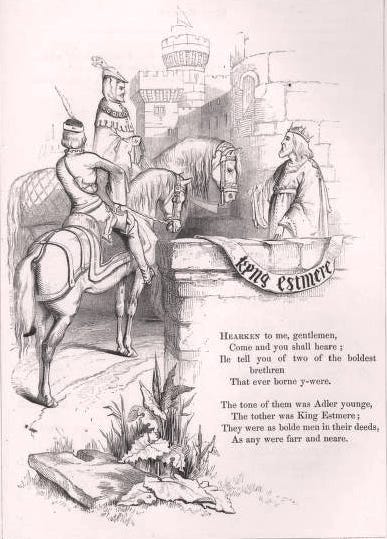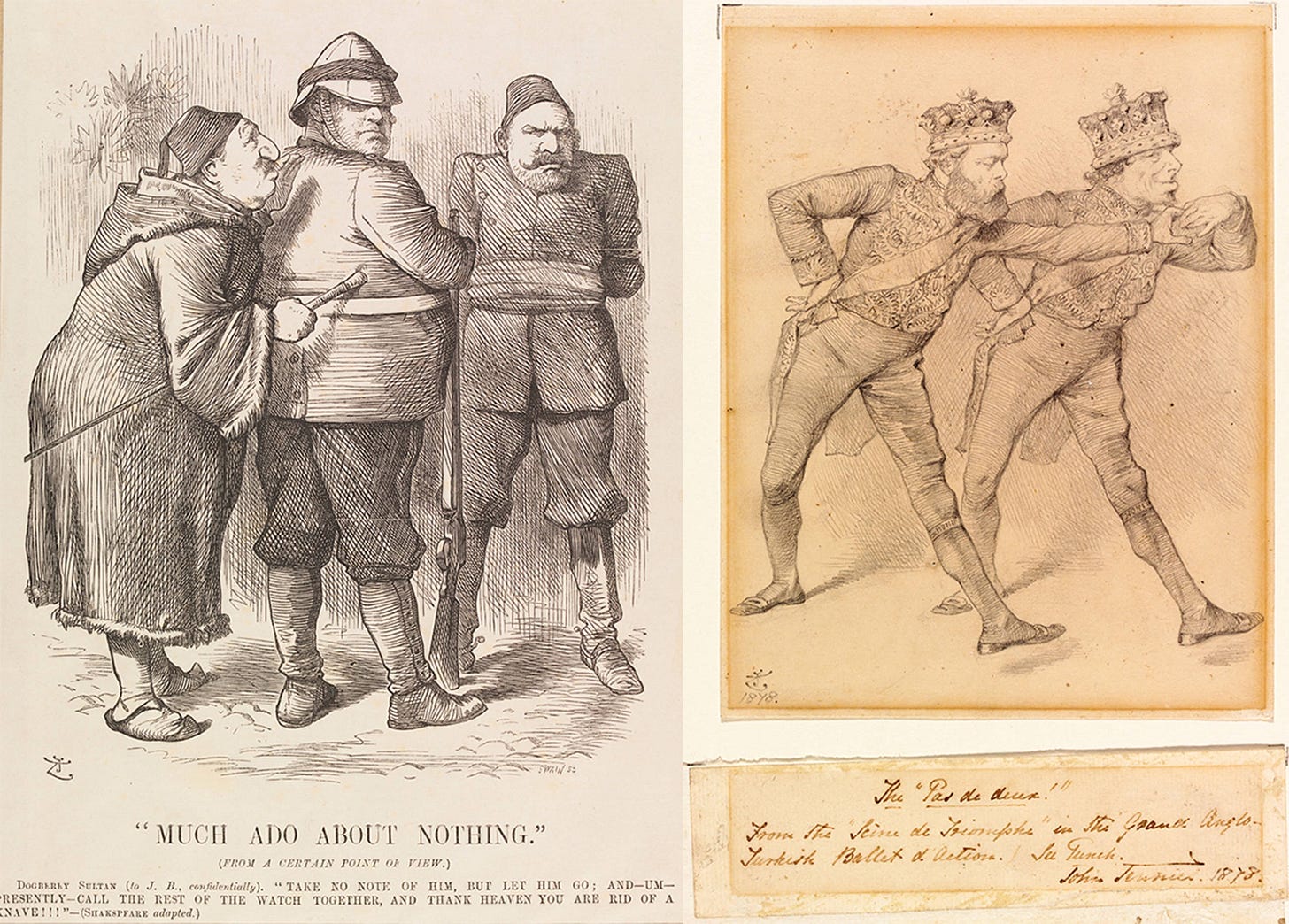John Tenniel was born on February 28, 1820, in London, England. At the age of 20, he suffered a partial loss of sight in his right eye. It occurred during a fencing match with his father (who was a fencing instructor). As Corryn Kosik, a Walt Reed Distinguished Scholar in 2018, wrote, “A staunchly even-tempered man, Tenniel did not react to the pain of the injury, so his father did not even know he had been harmed by his rapier.”
By the early 1840s, Tenniel had turned his attention to illustration—having grown frustrated with the fine art world. His first known illustrations for a book are seen in Jeremiah How’s 1842 publication, The Book of British Ballads.

In 1850, Tenniel began selling cartoons to Punch (magazine). Fourteen years later, he replaced caricaturist and illustrator, John Leech, as Punch’s principal cartoonist. Tenniel held this position until his retirement in 1901.

Over five decades, more than 2,000 political cartoons by Tenniel graced Punch’s pages. It’s impossible to quantify how many artists, spanning several generations, saw and were inspired by his work. One such artist was Ernest Howard Shepard, illustrator of Alan Alexander Milne’s Winnie-the-Pooh series.
Shepard was himself a staff artist for Punch. In 1923, Milne submitted a story to Punch editor, Edward Verrall Lucas. It was inspired by Milne’s explorations of the woods with his son, Christopher. These explorations helped Milne process Post-Traumatic Stress Disorder from his time in the trenches during World War I. Lucas connected Milne with Shepard. Years later, Shepard said he regretted drawing “that silly old bear,” as it overshadowed his political work for Punch.
Winnie-the-Pooh wasn’t the first time a beloved children’s book grew from a contentious coupling connected to “The London Charivari”.
Tenniel is, of course, most known for illustrating Lewis Carroll’s Alice’s Adventures in Wonderland (1865), Through the Looking-Glass (1871), and What Alice Found There (1871). If Alice lived in our world, she would have found that Tenniel and Carroll did not see (left) eye to eye.




